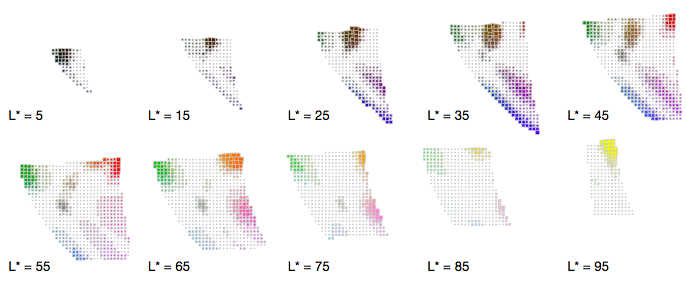ACM Human Factors in Computing Systems (CHI),
2012
Color Naming Models for Color Selection, Image Editing and Palette Design

Color Saliency Map. Each point represents a 5×5×5 bin in CIE L*a*b* color space; slices for every other L* value are shown. The area of each point is proportional to its saliency: large points indicate consistently named colors, small points indicate colors that exhibit high naming confusion. Interestingly, visible clusters correspond to basic color terms identified by Berlin & Kay (blue, brown, green, grey, pink, purple, etc).
abstract
Our ability to reliably name colors provides a link between visual perception and symbolic cognition. In this paper, we investigate how a statistical model of color naming can enable user interfaces to meaningfully mimic this link and support novel interactions. We present a method for constructing a probabilistic model of color naming from a large, unconstrained set of human color name judgments. We describe how the model can be used to map between colors and names and define metrics for color saliency (how reliably a color is named) and color name distance (the similarity between colors based on naming patterns). We then present a series of applications that demonstrate how color naming models can enhance graphical interfaces: a color dictionary & thesaurus, name-based pixel selection methods for image editing, and evaluation aids for color palette design.
